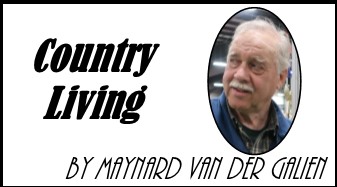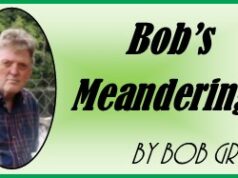When I was a youngster in the 1950s and until the mid-1960s, we cut hay with a steel-wheel pull type sickle mower. My job was to raise and lower the five-foot long knife with a lever that was beside the seat. It raised the knife about 18-inches or so. There was also a foot petal that put the machine in gear from the wheel. Father ran the tractor; I was the mower operator. No power-take-off. The mower was a McCormick-Deering painted red with yellow wheels. I remember it well.
In the mid-1960s we got a PTO (power take-off) mower that attached on the arms of the three-point hitch and we used that until we bought a New-Holland haybine in 1971. From then on we went from a nine foot cut to number of the larger haybines with a 12-foot cut. Then 18 years ago I bought a self-propelled swather, the Cadillac of cutting hay. No more twisting in the seat looking over my shoulder. Hay could now be cut looking straight ahead. The bonus was a lot fewer sore backs.
Now that the entire farm is in corn and soybeans and I’m not doing any round baling, the baler and the rake were sold last year and this spring the swather went. I needed a machine that will cut grass and weeds along the creek and ditches and around the yard so I bought a mower. A three-point-hitch pto driven mower on the back of a tractor that can cut when the knife is flat out and can cut when it’s up all the way to a 90 degree position. You’re probably thinking what are you going to cut when it’s up 90 degrees? It will trim small branches along roadways. The machine is made in Italy.
It’s amazing how hay-making has changed since I was a boy. I often wonder what my father and the farmers of his generation would think if they could see how farmers speedily cut down entire fields of hay with the modern discbines.
The New Holland haybine was a great invention. There was a seven and a nine-foot cut. Later 12-foot models were made. Forage was cut, crimped and swathed in one trip over the field. Looking back now they were slow machines, they plugged easily and were a pain in the neck. Pain in the back too, as the operator was always twisted in the seat looking over the right shoulder.
Anyway, I’m looking sideways when operating my new mower and trimming the edge of fields, ditches and beside the township road along my farm land.





![Kenopic/Smith Auction [Paid Ad]](https://whitewaternews.ca/wp-content/uploads/2018/10/advertising-100x75.jpeg)

